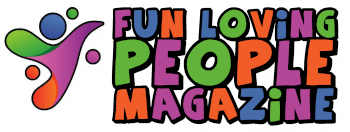Cinderella’s Castle at Disney World and Sleeping Beauty’s Castle in Disney Land are iconic symbols of fantasy and magic. While many admirers of these fairy tale castles might not know their origins, it’s fascinating to discover that they were modeled after Bavaria’s Neuschwanstein Castle.
Cinderella’s Castle and Sleeping Beauty’s Castle, like many great works of art, drew inspiration from various sources. Among these sources were Fontainebleau and Versailles. However, it’s Neuschwanstein Castle’s dainty turrets and romantic vistas that stand out as the primary influence on these iconic masterpieces.
Castles, in their historical context, were primarily defensive fortifications designed to withstand attacks. These older castles typically featured thick curtain walls, rectangular crenelated towers, and a minimal number of windows to reduce vulnerabilities. They were practical structures with sparse interiors, far from the lavish homes depicted in fairy tales.
In the mid-1800s, King Ludwig II of Bavaria commissioned the construction of Neuschwanstein Castle. Interestingly, this castle was a departure from the traditional defensive designs of earlier castles. Instead, it embodied the style known as castle romanticism or Romanesque architecture, with elements of neo-Gothic influence. Situated near the village of Hohenschwangau in southwest Bavaria, Germany, Neuschwanstein Castle was more of a royal dream than a military stronghold. King Ludwig II envisioned creating a kingdom where he could reign supreme, an idea so romantic that it could have come from a fairy tale itself.

The castle’s location atop a hill overlooking two lakes and the village was chosen not for defensive purposes but for the breathtaking views it offered. King Ludwig expressed his intention to rebuild the old castle in the style of the old German knights’ castles. He saw the location as holy and approachable, equating the castle’s lofty heights with that of Heaven.
Neuschwanstein Castle, unlike older castles, featured a mix of architectural elements. While it did have a prominent rectangular tower, it also boasted several cylindrical towers, a design aspect that influenced Cinderella’s Castle. The exterior was adorned with numerous windows, turrets, and decorative chimneys, even featuring frescoes in the courtyard. These decorative elements, impractical in traditional castles, served as inspiration for the fantasy-like Cinderella’s Castle, more suited for happily ever afters than defense. Inside Neuschwanstein Castle, the atmosphere was a tribute to the courtly love often found in fairy tales. The ceilings were lofted, and adorned with chandeliers, and the walls depicted colorful tapestries of dragons and damsels in distress. The furnishings were opulent, making the castle a true work of art. King Ludwig himself played a significant role in the design, creating a theatrical setting reminiscent of a fairy tale.
Despite commissioning and designing the fairy tale castle that would later inspire Cinderella’s Castle, King Ludwig II did not have a fairy tale ending. Known as the “mad king,” he struggled with the responsibilities of rulership, preferring the worlds of theater and romantic literature. Eventually, his financial mismanagement led to his deposition as king.
In a tragic turn of events, King Ludwig II’s life ended mysteriously. On June 10, 1886, he was taken into custody by a government commission and declared insane. Just three days later, he was found dead, along with one of the doctors responsible for his diagnosis, Dr. Bernhard von Gudden, in a nearby lake. While official reports suggested drowning as the cause of death, evidence pointed towards a more tragic end, with signs of strangulation on Dr. von Gudden’s body and Ludwig’s reputation as a strong swimmer raising questions about suicide.
The Fairy-Tale Origins of Neuschwanstein Castle
Neuschwanstein Castle in Germany holds a well-deserved reputation as “the fairytale castle.” This enchanting moniker finds its roots in the visionary mind of King Ludwig II, a figure known for his eccentricity and reclusive nature. In a letter to his friend, the renowned German composer Richard Wagner, King Ludwig II unveiled his intentions for Neuschwanstein Castle. His aspiration? To breathe life into the old castle ruin, a dream that ultimately birthed this iconic fairytale fortress.
Walt Disney’s Inspiration
The connection between Neuschwanstein Castle and Disney’s enchanting creations is more than a mere coincidence. During a European vacation, the legendary Walt Disney and his wife embarked on a journey that would forever shape the world of animation and fantasy. Their destination: Neuschwanstein Castle. Here, amidst the fairy tale architecture and the picturesque landscape, Disney found profound inspiration.
Intrigued by the castle’s allure, Walt Disney set out to translate its magic into his realm of creativity. The result? The iconic Sleeping Beauty castle, not only graced Disney’s animated masterpieces but also served as the emblematic logo for Walt Disney Pictures from 1985 to 2006.
Cinderella and Sleeping Beauty
The significance of Cinderella’s castle as a symbol of Disney goes beyond its mere architectural beauty. It draws its essence from the tales of Cinderella and Sleeping Beauty themselves, two beloved icons in Disney’s pantheon. Both stories, with their rocky beginnings and enchanting transformations, echo the very essence of Disney magic: the promise of a happily-ever-after.
A Modern Wonder
The construction of Cinderella Castle, unlike its European counterparts, marked a departure from tradition. In a mere 18 months, this modern wonder emerged, standing as a symbol of Disney’s creativity and innovation. But what sets it apart is not just its swift construction; it’s the materials used. Unlike the centuries-old stone castles of Europe, Cinderella Castle was crafted from concrete, steel, cement, plaster, and fiberglass. The absence of traditional bricks speaks to Disney’s vision of marrying the old-world charm with the modern.
Building Cinderella’s Castle
The construction of Cinderella Castle at Walt Disney World in Orlando, Florida, was a remarkable feat of modern engineering and design. Unlike traditional European castles, this fairy tale masterpiece was built with a blend of creativity and innovation, making it a symbol of Disney magic.
Disney’s Imagineers, renowned for their creative genius, crafted the blueprint for this enchanting structure. Every detail, from its spires to its moat, was carefully considered to capture the essence of a fairy tale castle.
Materials and Techniques
One striking aspect of Cinderella Castle’s construction is the materials used. Unlike the centuries-old stone castles of Europe, this modern wonder was built using concrete, steel, cement, plaster, and fiberglass. This departure from tradition allowed for swift construction while preserving the castle’s enchanting appearance.
The Construction Process
The construction of Cinderella Castle proceeded at a remarkable pace. In just 18 months, this iconic structure rose to its full glory. Skilled craftsmen and engineers worked tirelessly to bring Disney’s vision to life, ensuring that every detail was faithfully recreated.
Decor and Details
The interior of Cinderella Castle is as captivating as its exterior. Disney spared no expense in adorning the castle with rich furnishings, decorative elements, and artistic details. The result is a castle that not only looks enchanting from the outside but also provides a truly immersive experience for visitors.
A Symbol of Magic
Today, Cinderella Castle stands as a symbol of Disney’s commitment to creating magical experiences. Its construction process, marked by innovation and creativity, reflects Disney’s dedication to bringing fairy tales to life. As visitors pass through its majestic gates, they enter a world where dreams come true, thanks to the meticulous planning and craftsmanship that went into building this modern marvel.
Ludwig II never witnessed the completion of Neuschwanstein Castle, which was finished six years after his death. Despite his short-lived reign and personal struggles, his dream castle left an indelible mark on architectural history, inspiring the enchanting castles that continue to captivate our imaginations today.
